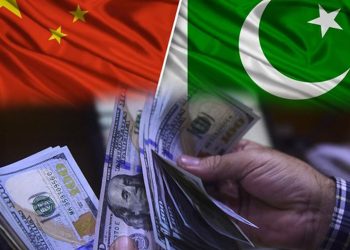Remittances from Pakistanis living overseas decreased to a four-month low of $2.44 billion in September 2022.
In September 2022, compared to inflows of $2.72 billion the previous month, receipts decreased by 10.5%, according to a report released on Tuesday by the State Bank of Pakistan (SBP). When compared to the same month last year, when they totaled $2.78 billion, the remittances were down 12.3%.
According to experts, who cited SBP Governor Jameel Ahmed, some non-resident Pakistanis chose to transfer remittances through the open market and illegal channels (including Hundi and Hawala) in September of this year because they offered a significantly better exchange rate. The inflows through formal channels suffered as a result. In comparison to the rate provided by banks for the majority of the month, the price of the US dollar was Rs10–12 higher in the open and gray markets.
According to the central bank, the total amount of remittances declined by 6.3% between July and September of FY23, totaling $7.7 billion.
“The $2.5 billion in remittances from workers in a month is not awful. Fahad Rauf, the head of research at Ismail Iqbal Securities, told The Express Tribune that the number is actually good.
When compared to a significantly higher amount in the preceding month, the figure appears to be low. Rauf stated that Jameel Ahmed attributed the decrease in worker remittances to the shift of a portion of overseas Pakistanis to unofficial channels due to the availability of a higher rupee-dollar rate there, citing Monday’s analyst briefing given by the SBP governor on the most recent monetary policy statement (MPS).
Rauf said the flow of remittances slowed down from across the world including the five major markets like Saudi Arabia, the United Arab Emirates (UAE), the United States, the United Kingdom, and Europe.
He noted that the “global economic slowdown may partially be the cause of the overall reduction in remittances.”
High inflation readings and worries about a recession in the West may be related to the declining remittances from the US, UK, and Europe. However, the Middle Eastern nations have largely escaped the effects of the global economic crisis. He claimed that the decrease in remittances from Middle Eastern nations indicated that non-resident Pakistanis may have used open and/or illegal marketplaces to send money.
Following the fixation of the price of remittances at 108 taka per US dollar as opposed to the going market rate of 115 taka to a dollar, Bangladesh likewise saw a 25% decline in workers’ remittances in September. Given the flood situation, the market is anticipating relatively greater worker remittances, he said.
The floods may have had an effect on the friends and family of Pakistanis living abroad.
After the authorities launched a crackdown on the unauthorized networks and the spread of rupee-dollar rates between the formal and informal markets narrowed to normal levels, Tahir Abbas, Head of Research at Arif Habib Limited, expressed optimism that the overseas Pakistanis would return to the formal remittance channels in October.
According to him, the remittances in the current fiscal year would total around $30 billion. Saudi Arabia’s remittances decreased from $691.8 million in August 2022 to $616.6 million in September 2022. They came in at $474.3 million from the UAE. US and UK inflows both fell to $268.1 million and $307.8 million, respectively.
The rupee, meanwhile, extended its winning streak for the 13th straight working day, rising 0.08% to settle at Rs217.79 against the US dollar on Tuesday in the interbank market.
With this, the rupee has recovered 9.14% (or Rs21.96) over the course of 13 working days. Over the following two to three weeks, the rupee will recover to about Rs210, predicted Abbas.
He added that the supply of foreign currency had remained higher in the market than its demand. Exporters are selling more compared to the importers who are buying less these days. The situation has kept on supporting the rupee.






